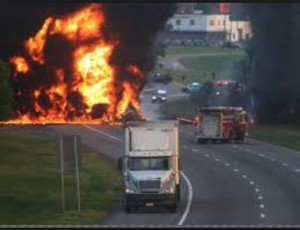 Emergency Incidents on-road affect the flow of traffic. This includes crashes, vehicle breakdowns, debris on the road, incidents in buildings along the busy roads and chemical spills.
Emergency Incidents on-road affect the flow of traffic. This includes crashes, vehicle breakdowns, debris on the road, incidents in buildings along the busy roads and chemical spills.
The police and emergency services with the safe and timely management of incidents respond as quickly as possible they get the information, including setting up signage and managing traffic flow around the scene.
“ The effectiveness of emergency medical and rescue operations is critical in reducing deaths and injuries resulting from road crashes. However, the post-crash phase is rarely mentioned in road safety strategy documents and, when there is coverage, it is often limited in detail. The NSW Road Safety Strategy 2012 – 2021 includes a specific focus on post-crash response and road trauma treatment, particularly better coordination between emergency retrieval and medical services and the Motor Accidents Authority, as well investigating options for automatic crash notification systems.”
The major factor in the effectiveness is automatic crash notification system i.e. The Response Time. How quickly the incident is reported and the closest emergency service team gets the information. Normally, CCTVs are installed at the crucial locations for monitoring of any incidents. Due to high volume of traffic and number of screens the incidents are likely to be get missed.
Through Real Time incident reporting system, alarms get generated in the real-time and nature of the incident. A multiple incident reporting at the sametime can be handled through this technology, e.g. external fire, accident, breakdown etc. can be reported in realtime to the appropriate nearby authorities to reduce the response time and optimum distribution of the resources.
Time to definitive care is important for trauma outcomes, thus many emergency medical services (EMS) systems in the world adopt response times of ambulances as a key performance indicator and the REALTIME incident reporting is potentially a major role in our smart city solutions.
